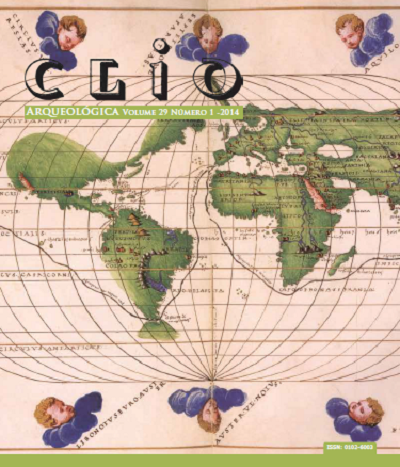SOBREVIVÊNCIA: A FACE SENSÍVEL DO TRÁFICO DE BENS ARQUEOLÓGICOS
Parole chiave:
Tráfico de bens arqueológicos, Pilhagem de sítios, Escavações clandestinasAbstract
Neste artigo pretendemos estimular uma reflexão sobre uma das práticas mais danosas à preservação de patrimônios arqueológicos: a pilhagem de sítios para obtenção de peças destinadas à comercialização. Em muitos casos justificados pela máxima equivocada e amoral de que os fins justificam os meios, os saques vêm se multiplicando mundo afora, aí incluído-se o Brasil, com impressionante velocidade e absoluta falta de escrúpulos, em detrimento da integridade dos sítios, que ficam inviabilizados para a pesquisa. São apontadas algumas alternativas possíveis, em especial na delicada circunstância dos saques destinados à sobrevivência de comunidades locais, fundadas em bem-sucedidos exemplos de gestão de seus próprios patrimônios.
ABSTRACT
In this article we look to stimulate wider discussion on one of the practices most harmful to the preservation of archaeological heritage: the looting of sites for artefacts to be sold commercially. In many cases justified by the wrong-headed and amoral maxim that the ends justify the means, these thefts have been multiplying across the world, including in Brazil, with an astounding speed and complete lack of scruples, harming the integrity of the sites and making future research inviable. Some possible alternatives are indicated, especially in sensitive cases where artefacts are removed to assist the survival of local communities, founded on successful examples of managing their own heritage.
KEY-WORDS: Trafficking in archaeological artifacts; Loot archaeological excavations; Clandestine excavations.
Riferimenti bibliografici
FLEMING, Maria Isabel D’Agostino e Maria Beatriz Borba Florenzano. Trajetória e perspectivas do Museu de Arqueologia e Etnologia da USP (1964–2011). Estudos Avançados [on line], 2011, vol. 25, n. 73, p. 217–228.
HOLLOWELL, Julie. Moral arguments on subsistence digging. In Chris Scarre & Geoffrey Scarre (eds.) The Ethics of Archaeology. Philosophical Perspectives in Archaeological Practice. Cambridge, Cambridge University Press, 2006, p. 88–89.
KAISER, Timothy. The Antiquities Market. Introduction. Journal of Field Archaeology 20:347, 1993.
LEAMAN, Oliver Who Guards the Guardians? In Chris Scarre & Geoffrey Scarre (eds.) The Ethics of Archaeology. Philosophical Perspectives in Archaeological Practice. Cambridge, Cambridge University Press, 2006, p. 32–45.
McEWAN, Colin, María Isabel Silva, Chris Hudson. Usando el pasado para forjar el futuro: genesis del museo y centro cultural de la comunidad de Agua Blanca. In Mercedes Prieto (org.) Espacios en disputa: el turismo en Ecuador. Flacso, Quito, 2011, p. 99–131.109
MATSUDA, David J. The Ethics of Archaeology, Subsistence Digging, and Artifact “Looting” in Latin America: Point, Muted Counterpoint. International Journal of Cultural Property ,1998, 7(1): 87–97.
QIN, Dashu. The effects of the antiquities market on archaeological development in China. In Nick Merriman (ed.) Public Archaeology. London and New York, Routledge, 2004, p. 292–300.
STALEY, David P. St Lawrence Island’s Subsistence Diggers: a New Perspective on Human Effects on Archaeological Sites , Journal of Field Archaeology 20:347–355, 1993.
Downloads
Pubblicato
Fascicolo
Sezione
Licenza
A submissão de originais para a Clio Arqueológica implica na transferência, pelos autores, dos direitos de publicação impressa e digital. Os direitos autorais para os artigos publicados são do autor, com direitos da revista Clio Arqueológica sobre a primeira publicação. Os autores somente poderão utilizar os mesmos resultados em outras publicações mediante citação do nome da Clio Arqueológica como publicação original.
Em virtude do acesso aberto este periódico, permite-se o uso gratuito dos artigos com finalidades educacionais e científicas, desde que citada a fonte conforme as diretrizes da licença Creative Commons.
Autores que submeterem um artigo para publicação na Clio Arqueológica, concordam com os seguintes termos:
a. autores mantém os direitos autorais e concedem à revista o direito de primeira publicação, sem pagamento, com o trabalho simultaneamente licenciado sob a Licença Creative Commons Attribution que permite o compartilhamento do trabalho com reconhecimento da autoria e publicação inicial nesta revista;
b. autores têm autorização para assumir contratos adicionais separadamente, para distribuição não-exclusiva da versão do trabalho publicada nesta revista (ex.: publicar em repositório institucional ou como capítulo de livro), com reconhecimento de autoria e publicação inicial nesta revista;
c. autores têm permissão e são estimulados a publicar e distribuir seu trabalho on-line (ex.: em repositórios institucionais ou na sua página pessoal) a qualquer ponto antes ou durante o processo editorial, já que isso pode gerar alterações produtivas, bem como aumentar o impacto e a citação do trabalho publicado;
d. as ideias e opiniões expressas no artigo são de exclusiva responsabilidade do autor, não refletindo, necessariamente, as opiniões da revista.









